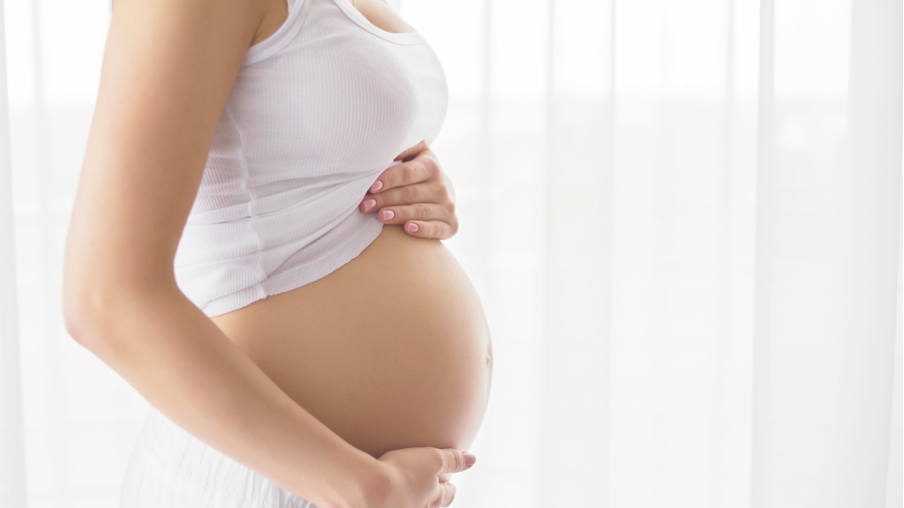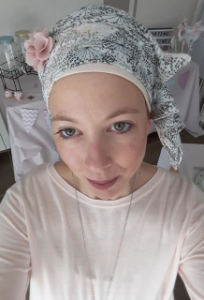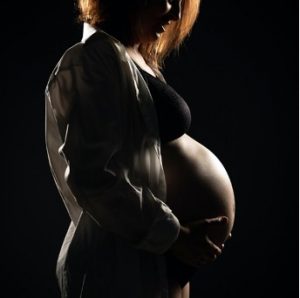

A baby after cancer, why not?

Becoming a mother after cancer? For many women, it is a new battle that begins.
As a matter of fact, cancer treatments can induce fertility problems. Today, solutions exist, but it is still necessary to be informed of one’s rights and the modalities of fertility preservatioń.
How best to preserve one’s fertility? What are the existing techniques? The latest innovations in the field? How did the women involved experience this?
I will provide you with some answers in this article.
What is fertility preservation?
Anti-cancer treatments and reduced fertility
Not all treatments have the same impact, and while doctors and researchers are well aware of the toxic effects of certain treatments on fertility, many studies are continuing to refine the data, particularly concerning new therapies.
-Radiotherapy
The effects of radiation therapy on fertility depend on the area of the body treated and the dose of radiation delivered.
Pelvic radiation therapy (in the area surrounding the pelvis) can cause varying degrees of damage to the reproductive cells in the testicles or ovaries.
In women, radiation therapy can also cause the uterus to become fibrous and the fallopian tubes to become rigid, which will alter its necessary flexibility during a pregnancy or may complicate the implantation of the embryo.
-Chemotherapy
Not all chemotherapies are sterilizing and the risks vary according to each patient, the molecules used, the dose prescribed and the duration of the treatments.
Chemotherapies containing alkylating agents (cyclophosphamide, procarbazine, chlorambucil, etc.) are known to be the most aggressive on the ovaries and testicles. Depending on the dose prescribed, these agents have a variable action, but the threshold of aggressiveness is difficult to determine.
– Surgery to remove the tumor can also permanently affect fertility. This is particularly the case for cancers of the uterus or ovaries.
Certain interventions at the brain level are also likely to affect areas involved in the regulation of sex hormones. In this case, hormone replacement therapy can compensate for this poor regulation.
-Hormone therapy, proposed in the case of hormone-dependent cancer, blocks the action of hormones produced by the ovaries. Pregnancy is then contraindicated and the parental project must be postponed for at least 5 years.
A “break” in treatment of up to two years is sometimes possible to consider pregnancy. Each situation is different and should be discussed with your oncologist.
Preserving your fertility, a human right above all
Cancer is increasingly affecting younger and younger women. The major therapeutic advances made in recent years allow patients to envisage real prospects for life after the disease, including becoming mothers.
This path is now possible thanks to a better knowledge of the impact of treatments on fertility and the means to limit their repercussions. Although cancer is no longer necessarily an obstacle to parenthood, it is essential to inform patients as soon as possible on this subject.
The Law of August 6, 2004 and the Order of June 30, 2017 on bioethics (Law No. 2004-800) provides that “any person, male or female, exposed to a treatment that risks altering his or her reproductive function may benefit from preservation of his or her gametes and germ tissue.”
The 2014-2019 Cancer Plan also plans to systematize patient information and facilitate access to fertility preservation platforms.
Note that since the Instruction DGOS/R3/INCa/2017/62 of February 23, 2017 on improving access to supportive care for cancer patients, support for the implementation of fertility preservation is part of complementary supporting oncology care.
On February 4, 2021, the President of the Republic also unveiled the ten-year cancer control strategy 2021-2030. This ambitious strategy, with new budgetary resources, aims to significantly reduce the burden of cancer in the daily lives of French people.
Many medical teams are organized to allow you not to give up your project of having a child. The Mathilde Clinic in Rouen, where I was treated during my cancer, is one of the establishments that offer this solution.
The point of view of Doctor Julie Roset, biologist in charge of the AMP and fertility preservation center of the Mathilde clinic in Rouen:
“Unfortunately, in reality, information on these possibilities and access to these devices for women facing cancer is still very unequal depending on the region”.
Fertility preservation, a major issue for cancer patients.
Preserving fertility is a right. But, while they must face the shock of the announcement of the disease, patients must also make the decision to preserve or not their fertility.
But how can we project ourselves into the future, consider giving life, when our own is in danger?
 Angelique, 34 years old attests: “When I was diagnosed with cancer, I didn’t think about my fertility, it didn’t even cross my mind. I had been with my husband for 18 years and we talked about having a child, but we weren’t in any great hurry, we said we would see in a few years.
Angelique, 34 years old attests: “When I was diagnosed with cancer, I didn’t think about my fertility, it didn’t even cross my mind. I had been with my husband for 18 years and we talked about having a child, but we weren’t in any great hurry, we said we would see in a few years.
When my surgeon explained to me that chemotherapy could sometimes make a woman menopausal and that hormone therapy would also postpone the time to consider pregnancy, I felt like my world was collapsing, perhaps worse than when I was diagnosed with breast cancer. I’m in a consultation to talk about my future treatment and all of a sudden they tell me about my ovules!
I was afraid I wouldn’t be able to have a child, it was a cold shower. And at the same time, it was the trigger, my trigger: I knew that I wanted to make this desire for a child a reality and I wanted to take all possible precautions.
I was then advised to preserve oocytes or embryos and today there are 7 embryos waiting for my husband and me.
What you have to keep in mind is that the time frame was short to set up the protocol, I only had one month before the start of the chemo, the hormonal stimulation and the oocyte puncture had to be done before the chemo to have the best chances.
I cannot thank my surgeon, her nurse coordinator and especially my gynecologist enough for their quick and efficient support.”
Fertility preservation techniques for having a baby post-cancer
Although it is not possible to guarantee 100% success, it does give patients who wish to do so the chance to carry out a parental project after the disease.
These preservation techniques can only be performed in centers authorized for fertility preservation.
– Fertility preservation in women
During a consultation, a pelvic ultrasound coupled with hormonal measurements allow us to estimate the stock of eggs (oocytes) present in the ovaries, otherwise known as “ovarian age”. Depending on the results, the type of cancer and the treatment protocol, your care team will suggest a fertility preservation procedure that is best suited to your situation.
Three methods exist. While none of them can guarantee a pregnancy, all of them increase the chances of having a baby through medically assisted reproduction, or even spontaneously.
– Oocyte or embryo cryopreservation is possible for all women, from puberty to 40 years of age.
-Mature oocyte retrieval is possible when treatments can wait at least two weeks. The patient then receives a daily injection of FSH hormone or other treatments that do not increase the level of estradiol in the blood (in the case of hormone-sensitive cancers: breast, ovaries) for 10 to 15 days in order to stimulate the production of mature oocytes. The mature follicles containing the oocytes are then punctured vaginally, under ultrasound control and local or general anesthesia.
This stock of oocytes can directly be frozeń or fertilized́ in the laboratory by the spouse’s spermatozoa, in the case where the project of having a child is already envisaged̀. The formed embryos are then frozen by vitrification at – 196 °C in liquid nitrogen.
– The freezing of matured eggs in vitro (in the laboratory) is possible for women from puberty to 40 years of age, who cannot benefit from ovarian stimulation due to lack of time or because of hormone-sensitive tumors.
Under general anesthesia, partially immature eggs are harvested from the so-called antral follicles. These eggs are cultivated in vitro and matured within 24-48 hours (in vitro maturation). Those that reach maturity (only 50%) are then frozen by vitrification or fertilized for embryo cryopreservation.
When the desire for a child is expressed and after agreement from the medical team, the mature oocytes can be thawed for fertilization in the laboratory (IVF) with the spouse’s spermatozoa. If the embryos have been vitrified, they can also be thawed and implanted in the patient’s uterus.
– Cryopreservation of ovarian tissue is recommended for girls before puberty and women under 37 years of age for whom hormonal stimulation is impossible and when cancer treatment is accompanied by a significant risk of menopause.
Under general anesthesia, a half ovary is removed by laparoscopy. Then, fragments of ovarian tissue containing very immature eggs within primordial follicles are frozen.
Fertility preservation in men
Sperm autoconservation for pubescent patients up to the age of 60.
Sperm is collected before any treatment is started. The sperm is frozen in flakes and stored in liquid nitrogen. They can then be kept for a very long time without their fertilizing power being altered.
Testicular tissue preservation for non pubescent patients.
This technique, which consists of removing and preserving testicular tissue, is still experimental and has not yet resulted in a pregnancy in humans. Research is currently underway.
Once the cancer has been cured, these fragments are re-implanted (graft), which allows the woman to have menstrual cycles again, and thus the possibility of a natural pregnancy. It is also possible to stimulate the transplanted ovarian fragments in order to perform IVF if the woman has not been able to become pregnant “naturally”.
Recent advances
In recent years, freezing methods have improved significantly. Eggs can now be preserved by vitrification, a high-speed freezing technique that prevents crystals from forming. It offers women more flexibility than embryo freezing. Even if they are not yet in a relationship at the time of retrieval, they can consider using the eggs when they are ready to have a child.
On the other hand, research continues in order to better predict, for each patient, the real risk of impaired fertility.
The team of Prof. Blandine Courbière, for example, a gynecologist at l’hôpital de la conception in Marseille, is conducting a pré-clinical study, supported by the Arc Foundation, to identify DNA lesions caused by certain chemotherapy agents such as those administered in cases of acute leukemia, and the repair phenomena that occur in oocytes.
Becoming a parent after cancer
Your oncologist, your first point of contact
Today, it is possible to carry a pregnancy to term after cancer, provided certain precautions are taken. Oncologists usually recommend a delay of 2 to 3 years between the end of treatment and conception. This is because the rate of relapse is unfortunately higher in the first two years, especially in younger women.
For women undergoing hormone therapy, this drug has the particularity of being teratogenic, i.e. it is likely to induce malformations in the child. It is therefore essential to use contraception.
If you wish to become pregnant, it is recommended to stop the treatment 3 months before conception, in order to wait until the body has no more traces of the drug.
Whatever your situation, your plans for a child must be discussed with your medical team.
A newfound happiness
 Laurie attests: “As soon as my cancer was announced at the end of 2015, the oncologists and I jointly expressed the possibility of preserving my fertility for after cancer. I was taken care of very quickly, 8 oocytes were retrieved. My husband was also involved and 2 embryos were preserved while waiting for the continuation…
Laurie attests: “As soon as my cancer was announced at the end of 2015, the oncologists and I jointly expressed the possibility of preserving my fertility for after cancer. I was taken care of very quickly, 8 oocytes were retrieved. My husband was also involved and 2 embryos were preserved while waiting for the continuation…
I quickly expressed my wish to have a second child after the announcement of my remission. The institution that followed me preferred to wait 2 years after the end of my treatments. In January 2019, the gynecologist removed the copper IUD I was wearing. Despite a not very encouraging hormonal check-up, I became pregnant the next cycle in a totally natural way…
I didn’t dare believe in this new found happiness that was opening up for us. And yet Zoé arrived in October 2019. The icing on the cake, I breastfed her for 8 months despite my mastectomy: it just goes to show that you always have to hang on and believe in your wildest dreams…”
To conclude
In this difficult fight against the disease, I was lucky to have the support of my two daughters: Lisa and Cécile. Today I measure the happiness of having had the possibility of carrying a child, of giving life, of becoming a mother.

